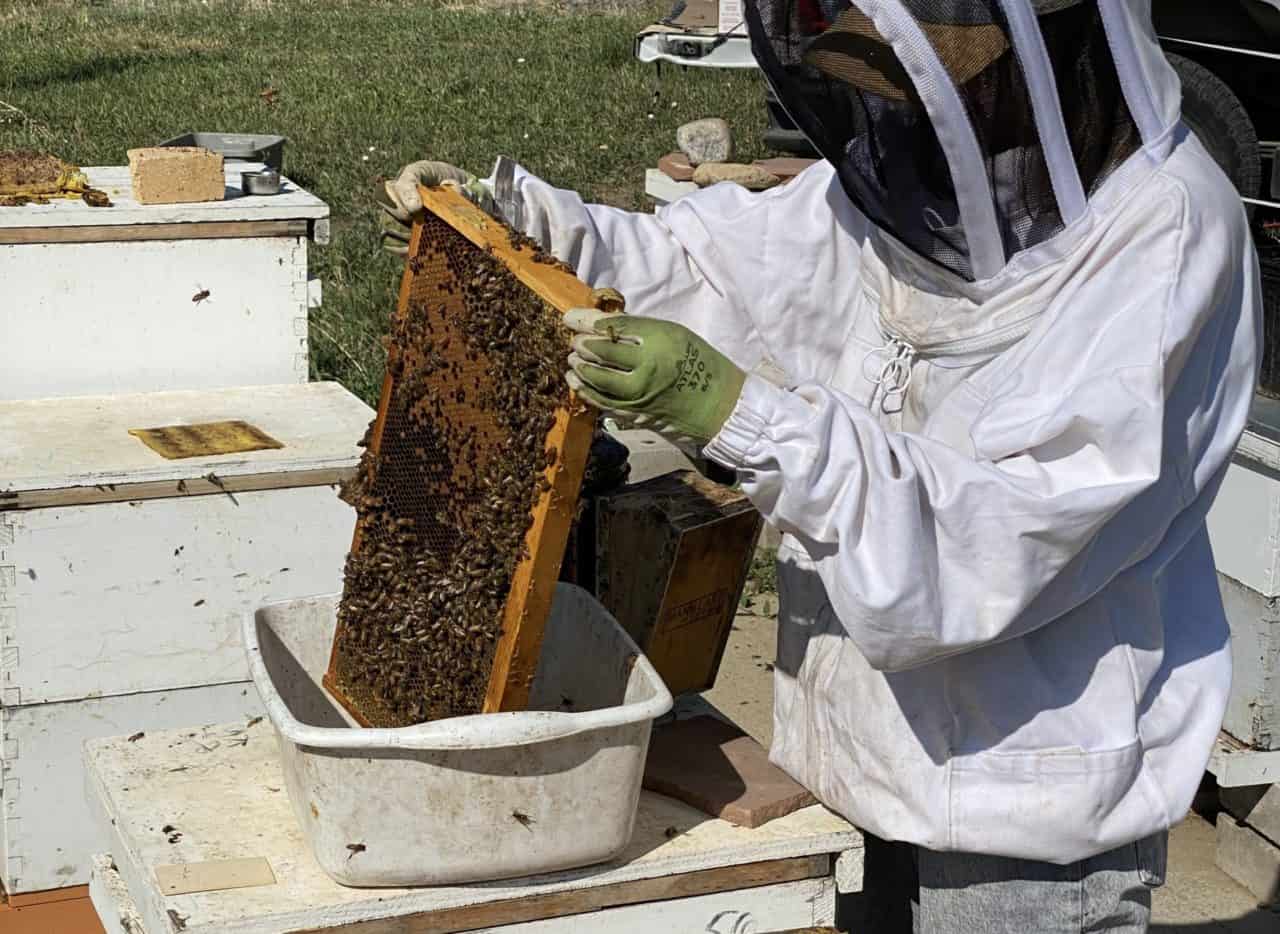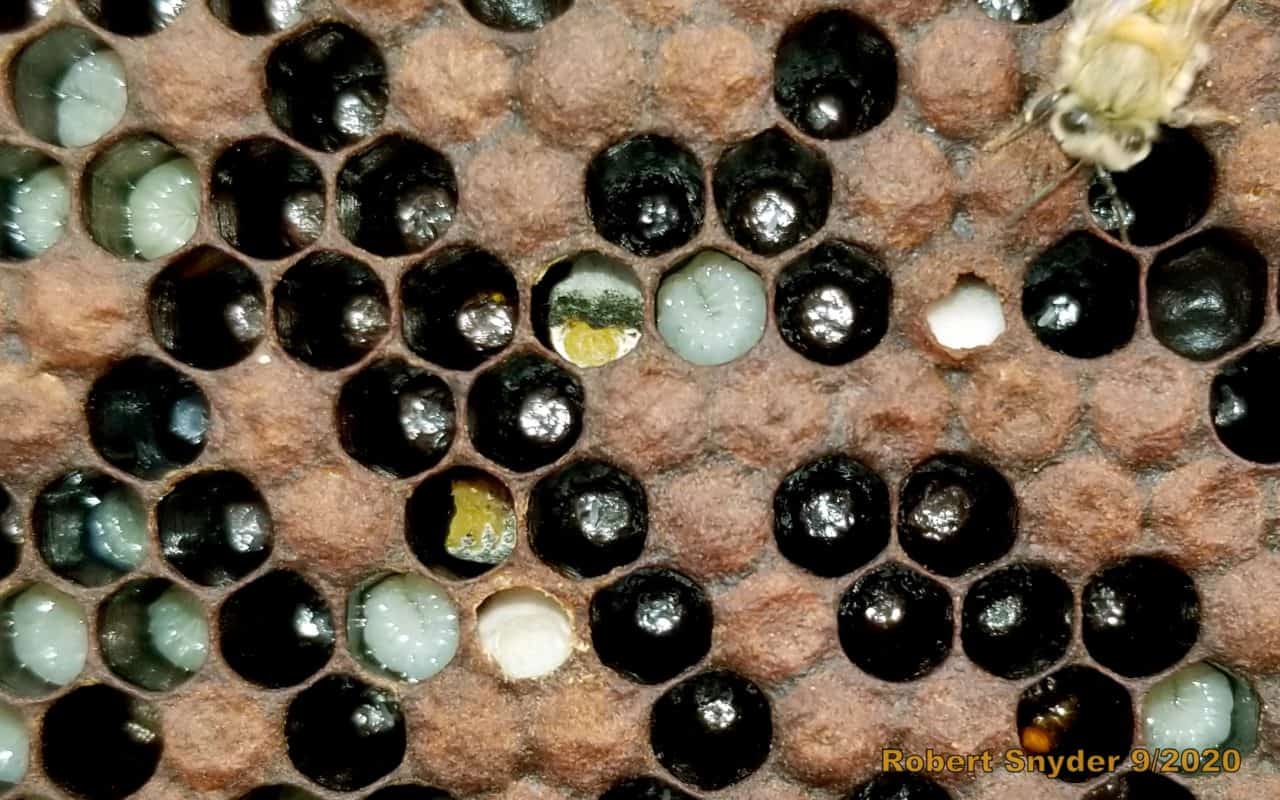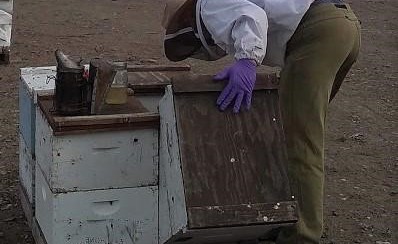Collaborations That Give Back - Featuring Dr. Katie Lee Authors: Rachel Kuipers and Eric Malcolm BIP is frequently contacted by beekeepers across the country who have experienced what we suspect are mite-related losses, not realizing their mite loads throughout the course of the season. Recent findings indicate that even those maintaining the commonly suggested 3% action threshold may still lose colonies to mite-related issues. Previously, industry standard for the Varroa action threshold—the threshold at which beekeepers should take action against the mites to avoid mite-related damage to their colonies—was a 3% infestation rate or higher throughout the season. The damage threshold, or the point at…
Category: Pest and Disease Control
Small Mammal Big Nuisance
One of the queen producers I work with, Joy Pendall, recently told me of some pest and flea problems she'd been having in a few of her yards. When she first told me about the damage these critters were causing I couldn't believe it - these mammals are not usually much of a pest for beekeepers to contend with, aside from occasionally chewing on the edges of bee boxes to wear down their constantly growing teeth. But Joy and her crew's stories and photos showed what an impressive amount of destruction that these little varmints managed to accomplish. The pictures (shared in this blog) show…
Scooping Bees
To keep healthy bees, beekeepers must monitor their colonies for harmful pests and diseases. This commonly includes testing for the presence and abundance of Varroa, Nosema, and (less frequently) a number viruses and pesticides. To perform these tests beekeepers need to sample their bees. It is not that hard to sample bees, but doing it quickly and accurately is an acquired skill. Of course, there are many good methods for sampling honey bees, but most involve some form of scooping. Choosing a Frame Since all of these tests are performed using a small number of bees relative to the total number found in the colony,…
Detecting Wax Moth Larvae in Frames of Sealed Brood
As a honeybee health field specialist, when I am assessing a colony's health I look for irregularities in the sealed or open brood (Image 1 & 2). These irregularities may indicate the presence of diseases or pests. One common pest that can cause brood irregularities is the wax moth. Wax moth larvae develop underneath the honey bee colony's brood cappings. The wax moth larvae often bind a honey bee pupa’s feet to the midline of the of frame, resulting in pupae that are not able to molt properly and therefore die in the capped cell before emergence. When identifying and locating wax moth larvae in…
Chalkbrood Disease Primer
When I started inspecting colonies for honey bee diseases in Pennsylvania in 2008, the first and most prevalent disease I found was chalkbrood. I observed this disease a few weeks into the spring season while inspecting a few colonies. I had seen the disease on several other occasions, so it was very easy to identify by the hard “chalk-like” mummies inside the cells. Ascosphaera apis is the fungus responsible for this bee disease. The exact origin of chalkbrood is unknown, but it most likely arrived from Europe with the alfalfa leafcutter bee (Megachile rotundata), when the bee species was introduced to assist with pollination demands…
The Challenges Of Setting Up A Small Case Study Experiment: Part I
This year, I vowed I would conduct one or two small case study trials to investigate some hunches I have had for a while. I am mostly curious about Oxalic Acid Sublimation (OAV) as a treatment against Varroa mites. Primarily I would like to investigate the recommended dosage. But before I can set this up as a valid experimental design, I need to set up some colonies to perform an experiment on. At the Bee Informed Partnership, we look at thousands of colonies each year, but we usually do not maintain our own. This year, I set up a small apiary and ran into some…
Look Down
Separating a hive from the bottom board and tilting it forward is a useful first step before proceeding further with a colony inspections for several reasons. A tilt allows you to assess the overall weight of a hive while letting the bottom board carry the weight. Tilting also facilitates looking at the bottom bars to assess the coverage and density of bees allowing for a population estimate to be made. These are both valuable pieces of information that allow broad inferences about colony health to be made, but tilting the hive forward before proceeding further also allows you to examine the state of the bottom…
American Foulbrood – Connecting Beekeepers with Diagnostic Resources
As a Field Specialist on the BIP Tech Transfer Team, part of my job is to help commercial beekeepers to “nip problems in the bud”. Here is a recent event that illustrates the impact we have through the Tech Team Program. While doing routine sampling for a beekeeper, I happened to find a colony that had every major sign of American Foulbrood. American Foulbrood, or AFB, is a bacterial disease of the brood, that used to be the major scourge of beekeeping. Inspection programs, careful follow-up by beekeepers, and antibiotics for treatment and prevention probably have all helped reduce its impact on bee health. However,…
2019 California Spring Update
Many California beekeepers reported that the start of this year was the worst in 20+ years. Several factors contributed to this year’s issues, starting with the numerous fires last year causing nearly 3 months of smoke in the area. Once the days got longer, queens started laying but the temperatures dropped again and egg laying stopped once more resulting in smaller colonies after almonds. In fact, most colonies were 2-3 weeks or even a month behind, which delayed the start of queen production. Many producers had to source bulk bees from beekeepers further south to begin starters, builders and nucs. Once queen producers started generating…
Wintering Sheds: Why are more North American beekeepers overwintering their bees in cold storage?
More and more US beekeepers are starting to place their bees in sheds for the fall, for indoor wintering. While beekeepers in Canada have done this for decades, the popularity of the practice in the US is more recent. Beekeepers began by using structures already built for onion and potato storage in Idaho to house their bees in the fall. One Stop Self Storage was built with an intent to help beekeepers and to create good environment for bees .These beekeepers then remove the bees in January, and bring them to California for almond tree pollination. Many beekeepers are still using old potato and onion…







